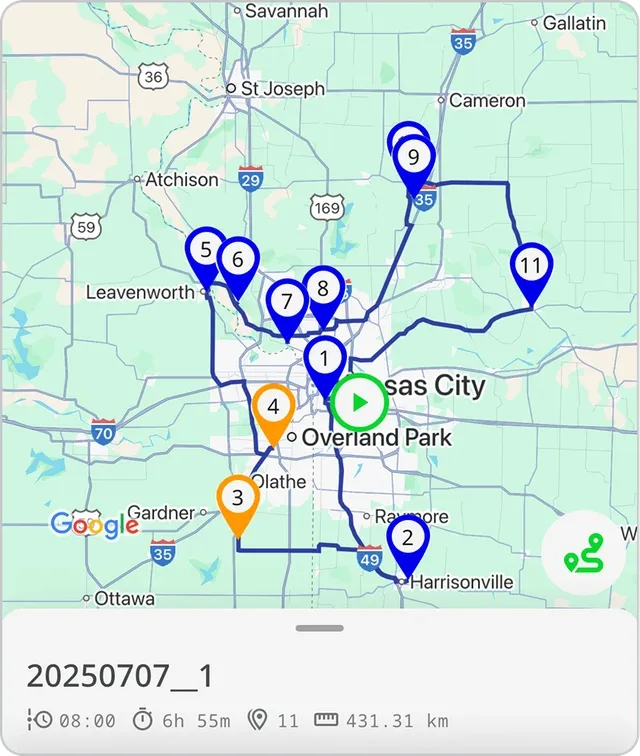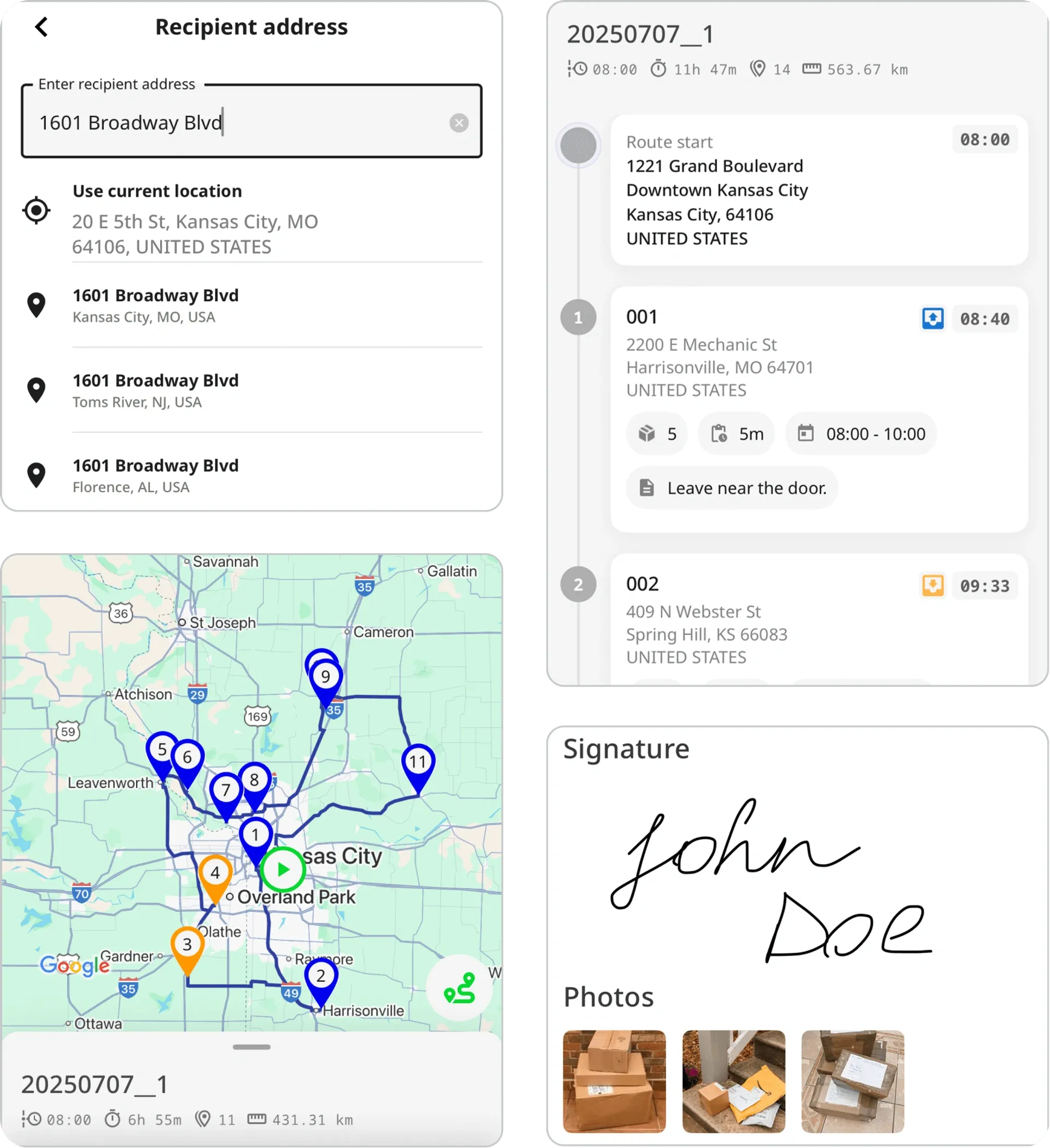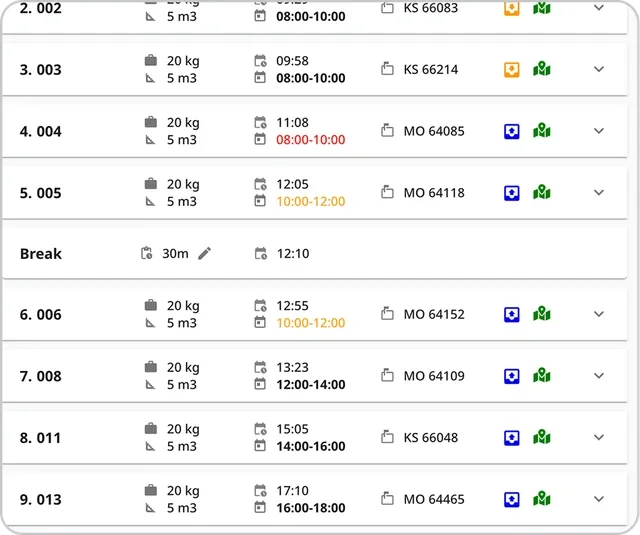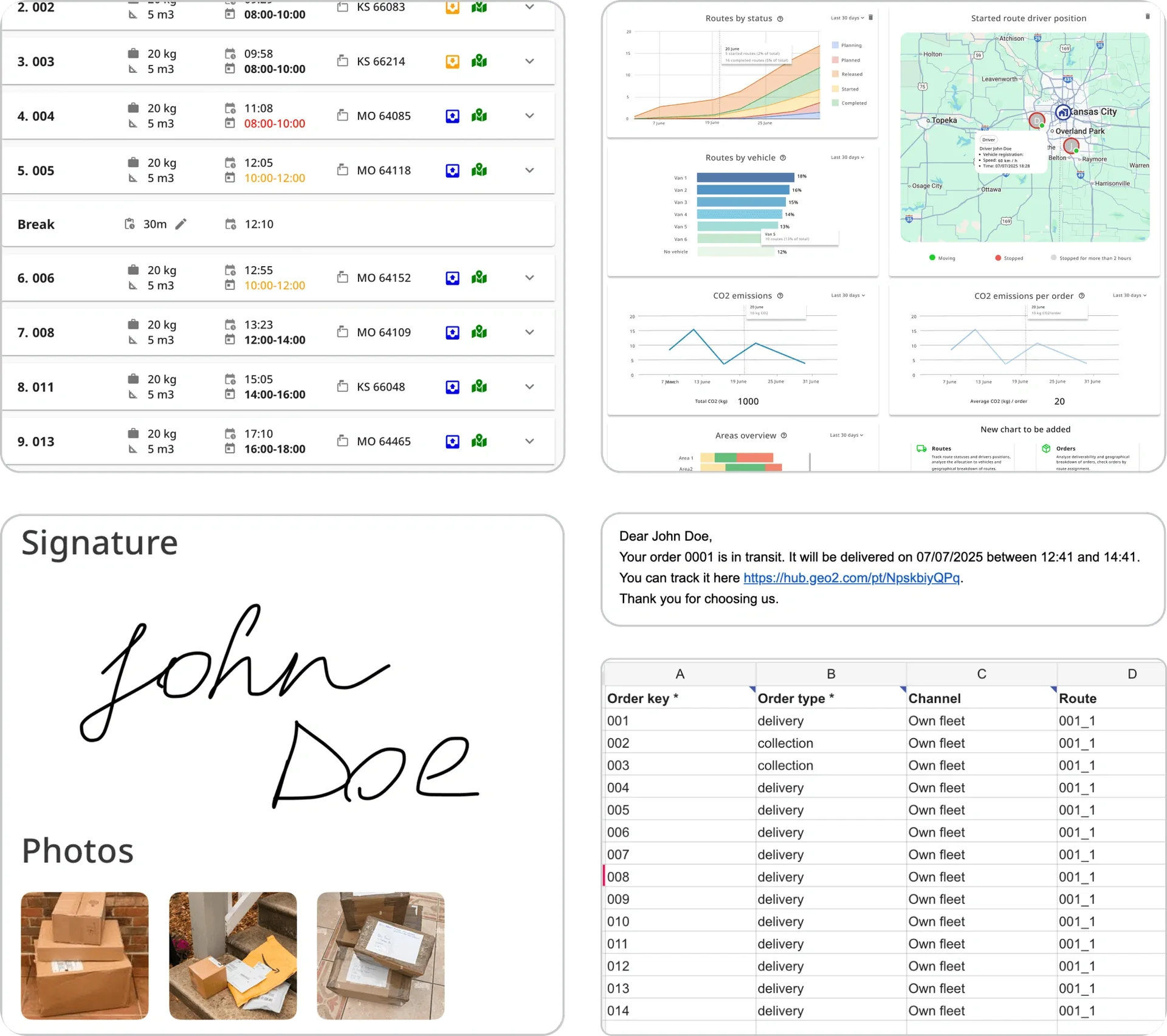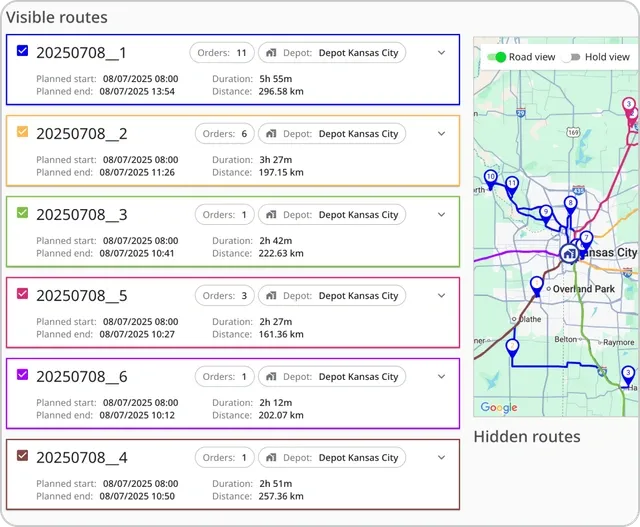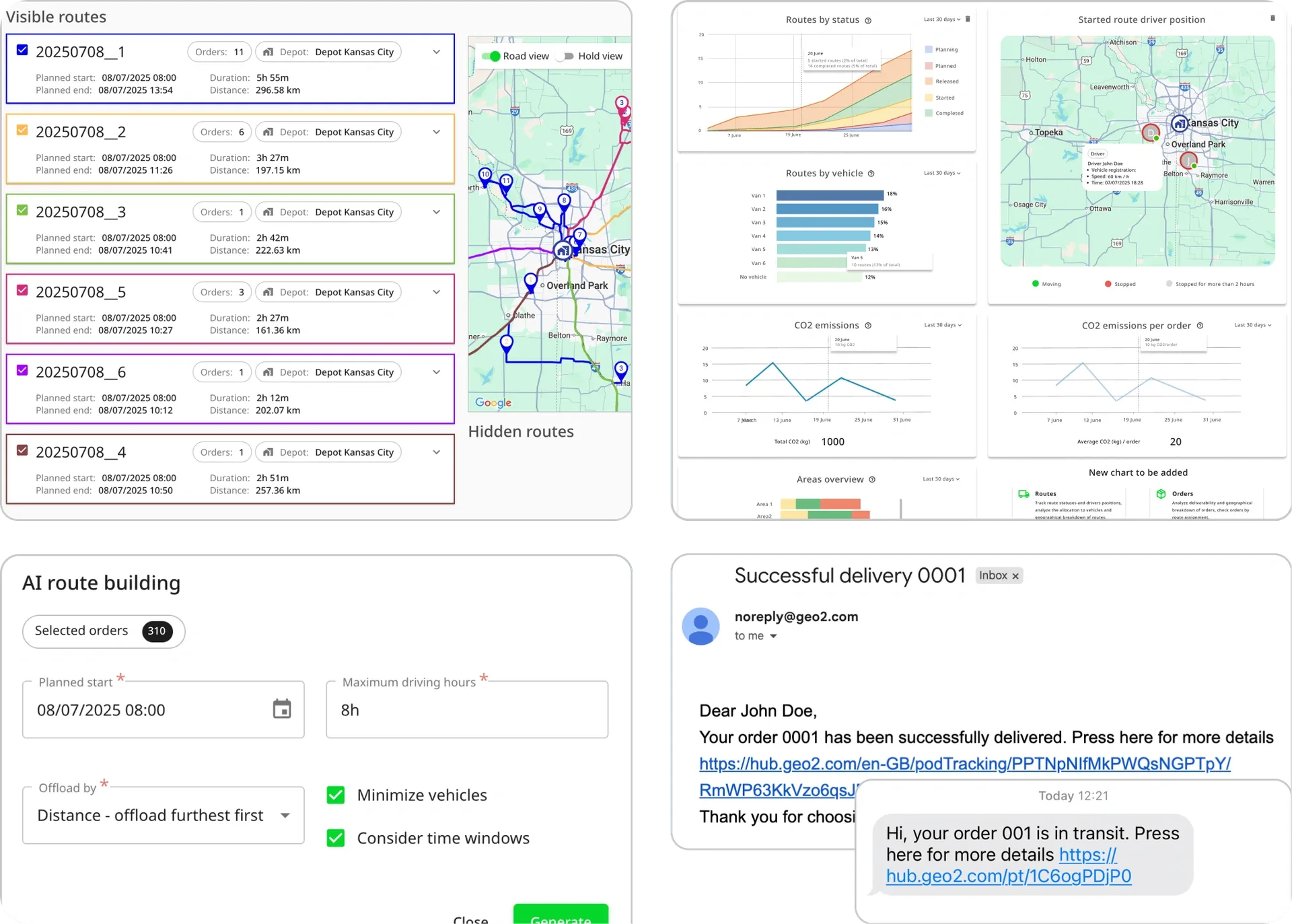FREQUENTLY ASKED QUESTIONS
Geo2 is a simple and powerful delivery route planner designed to help drivers optimize their daily routes. It helps you organize stops, find the fastest way to complete your deliveries, and track your progress in real time.
Stop Wasting Time on the Road
Plan faster. Deliver smarter. Finish earlier. Geo2 makes every delivery day easier.

